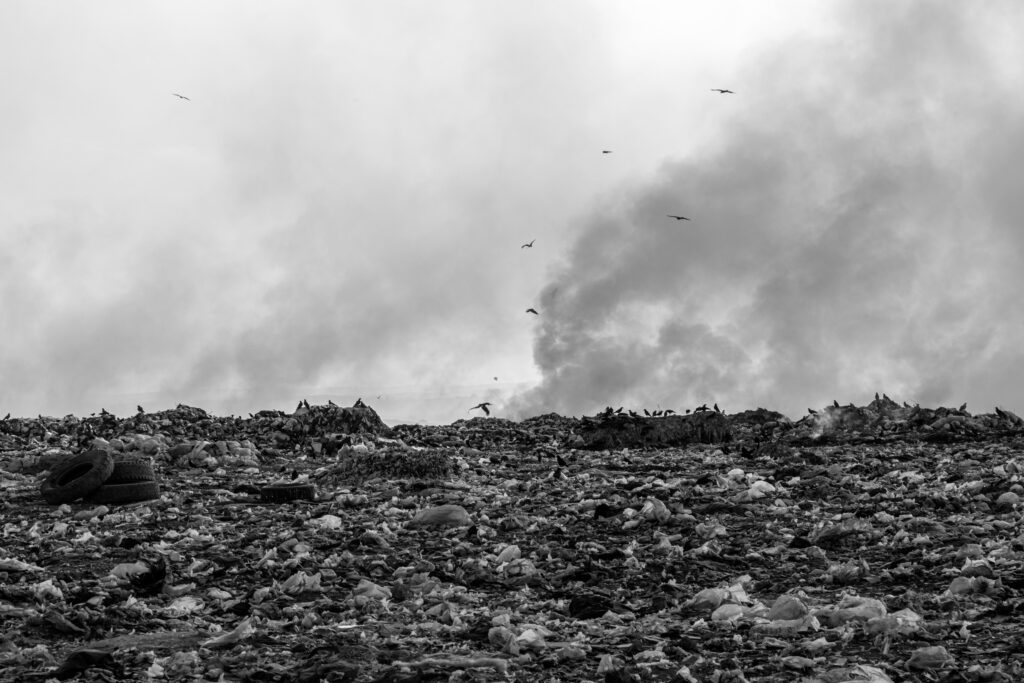
Part 1: The Background | Part 2: What It Meant
If the burning of the sin offering “outside the camp” meant that
- Israel’s sin is so vile, so revolting, so contagious, so polluting, that its very offering cannot be burned where the other offerings—the peace offering, the thanksgiving offering—are. It’s as though the very smoke of the offering is contaminating;
- Israel is called to reject its sin as it would reject its own sewage or its own murderers. Get rid of it. Get as far from it as you can;
then what does it mean that Jesus was executed similarly “outside the camp”?
We’ve noted that the author of Hebrews specifically ties the death of Christ outside the city of Jerusalem to the significance of the burning of the sin offering “outside the camp” (He 13.11-12). This is not a coincidental parallel; God wants us to regard the Crucifixion as a sin offering, with all the significance that an immolation outside the camp would bear in the Jewish mind.
So what can we conclude?
First, at Calvary Christ became unclean for us.
The Scripture directly states this truth:
- The Lord has laid on him the iniquity of us all (Is 53.6).
- For our sake he made him to be sin who knew no sin, so that in him we might become the righteousness of God (2Co 5.21).
We’ve all heard teaching about the physical suffering involved in Roman crucifixion, and I don’t want to minimize that for a moment. Crucifixion was designed to be the most painful way to die.
But I would suggest that Jesus’ physical pain throughout that experience, as extreme and agonizing as it was, was the least of his worries.
For that time, he was guilty of all the sin of all the people who had ever lived. What kind of pain did that cause to his utterly undefiled conscience?
“Every bitter thought, every evil deed,” indeed.
But there’s even more.
Second, at the cross Jesus the Eternal Son was rejected—
- By his own people, for alleged uncleanness (Is 53.3-4; Lu 4.28-29; Jn 1.10-11; Mk 15.6-15)—
3 He was despised and rejected by men, a man of sorrows and acquainted with grief; and as one from whom men hide their faces he was despised, and we esteemed him not (Is 53.3).
10 He was in the world, and the world was made through him, yet the world did not know him. 11 He came to his own, and his own people did not receive him (Jn 1).
- And by his own Father, for genuine uncleanness—as far from the Tabernacle, the visible manifestation of God’s presence with his beloved people, as he could possibly be.
Outside the camp.
Expelled. Rejected.
There could have been no greater pain, real or imagined.
“My God, my God! Why hast thou forsaken me?!”
I find it interesting that when Jesus cried these words, the bystanders thought he was calling for Elijah.
They didn’t recognize a line from their own hymnbook (Ps 22.1).
They didn’t recognize the name of their own God.
Yet he died for them.
We don’t hate our sin, or love our Savior, nearly enough.
The author of Hebrews makes a further application:
Therefore let us go to him outside the camp and bear the reproach he endured (He 13.13).
We are “in Christ” (Rom 8.1):
There is therefore now no condemnation for those who are in Christ Jesus.
The Father no longer rejects us, but the world does.
- Let’s not be surprised by rejection for his sake.
- Let’s bear his reproach (cf Heb 10.32-34).
When Satan tempts us, let’s respond, “I’m with him.”
When our culture takes his name in vain, when our coworkers and neighbors raise an eyebrow, when we face a choice between listening to our conscience or listening to our civil leaders, whatever the situation, whatever the sacrifice, let’s stand up, move swiftly and resolutely to his side, and say, “I’m with him.”
Christ, our sin offering, is sacrificed for us.
Why should we want anything else?
Photo by Bakhrom Tursunov on Unsplash
